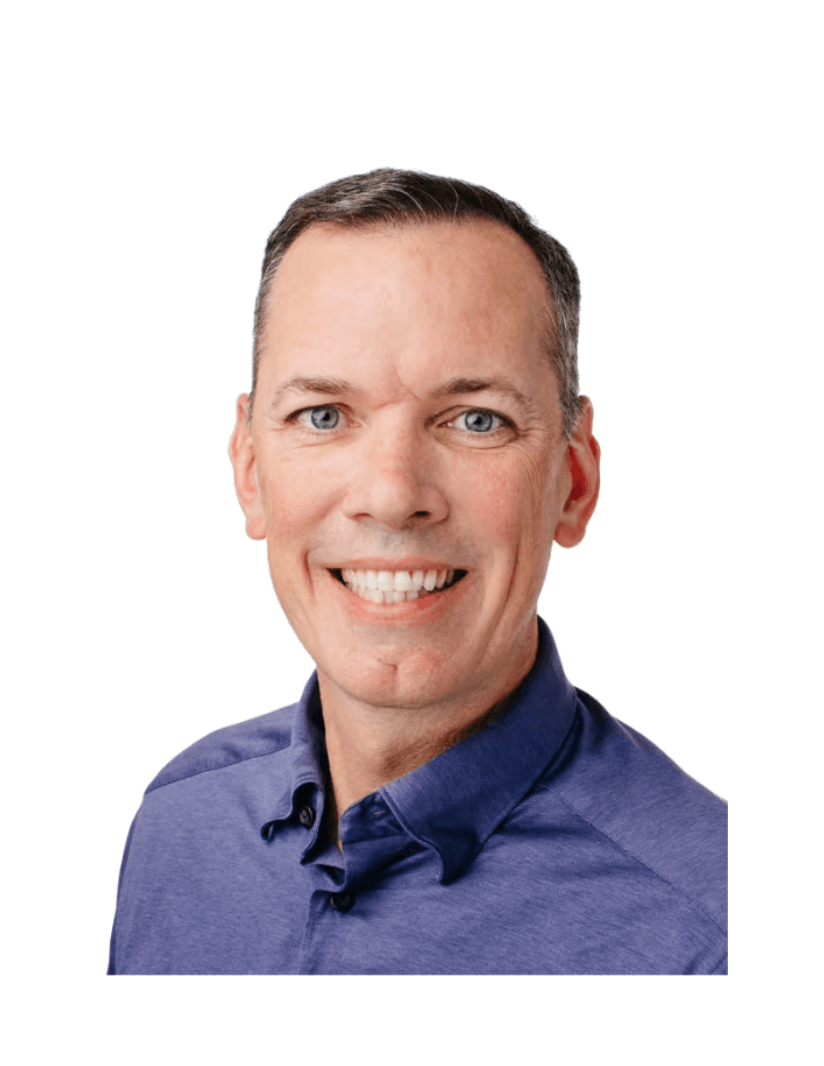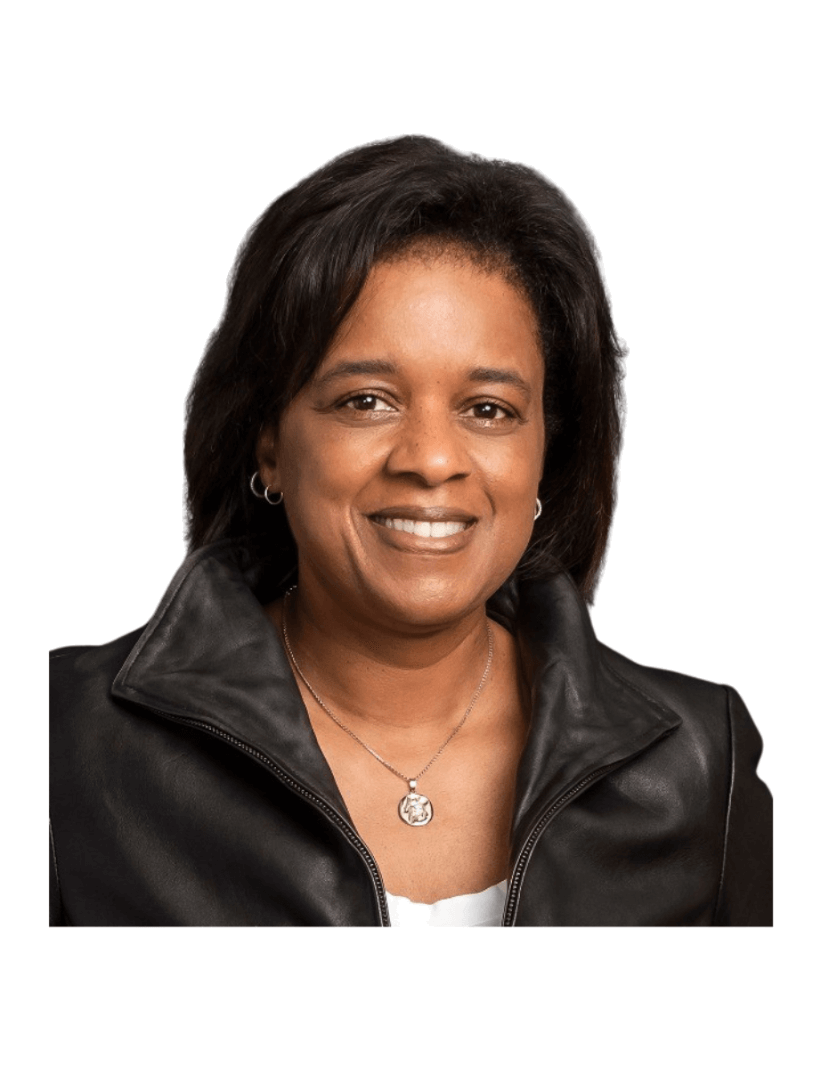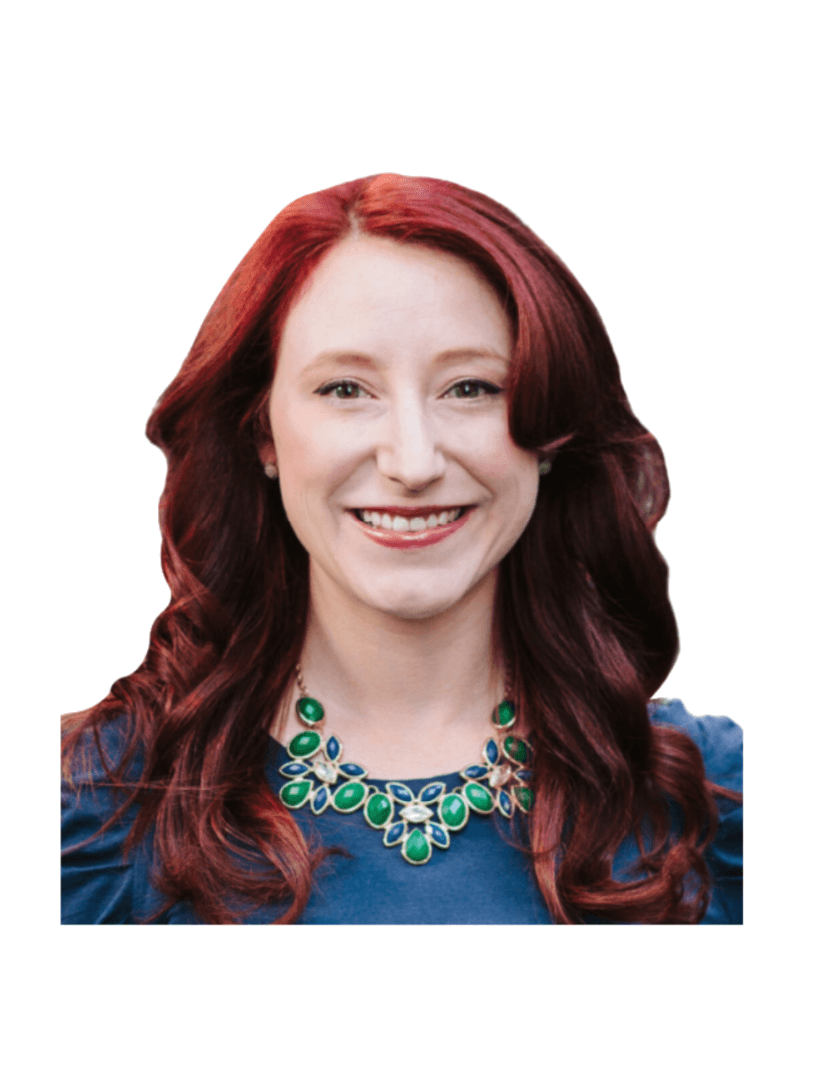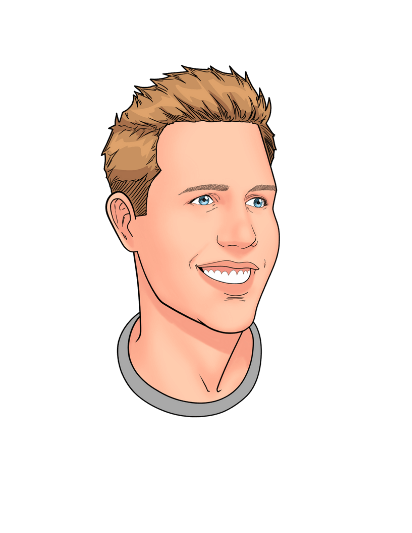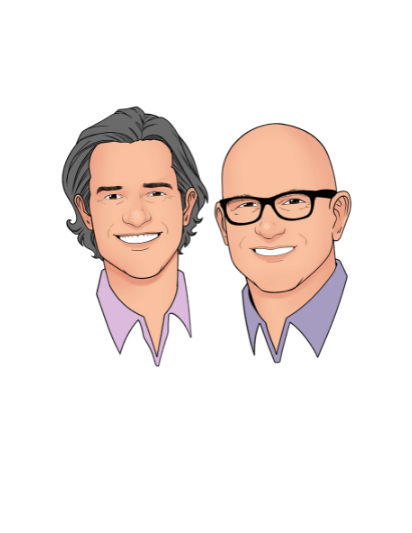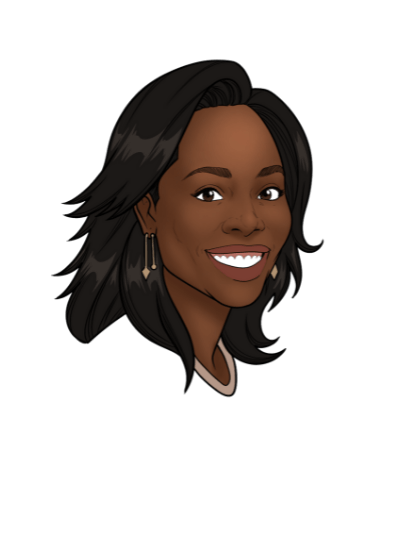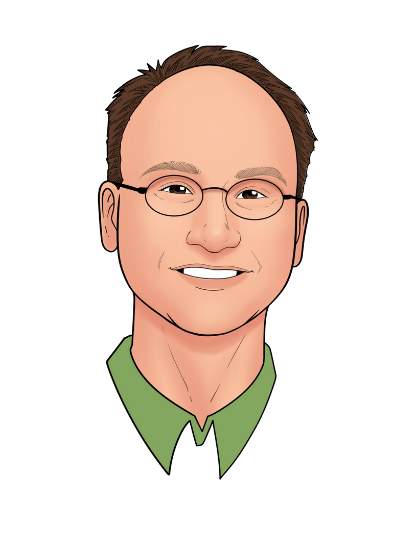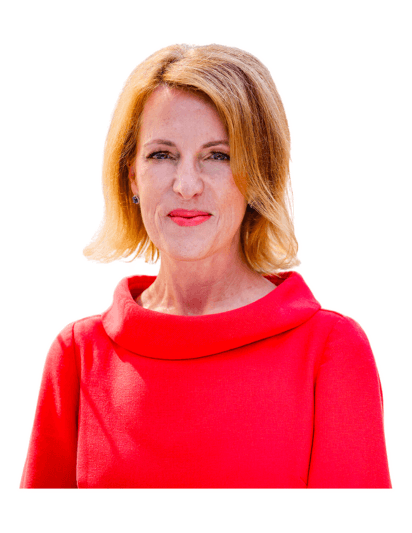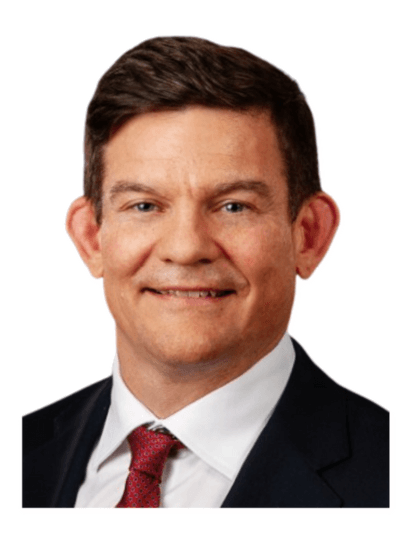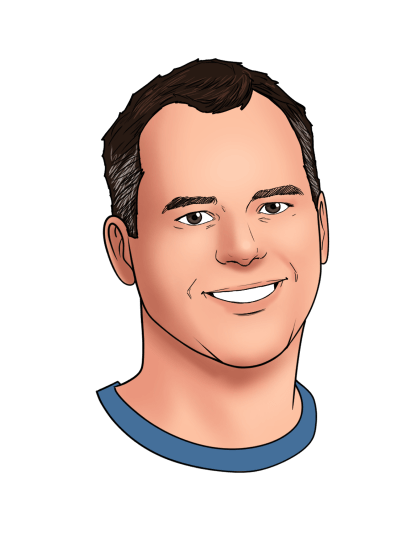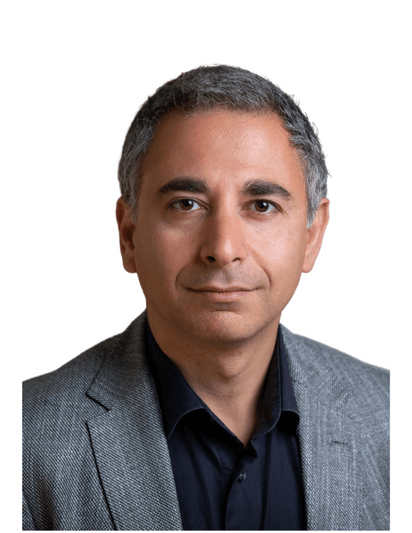
125

Episode 125 42 mins
Building a Human-Centric Organization: Emphasizing Emotional Safety, Location Freedom, and Massive Diversity
Tony Jamous, CEO & Founder of Oyster HR
00:00
00:00

Trust and transparency plays an important role, because you build trust with transparency. You need to be transparent and contextual in the right way with your team, but you always have to default to transparency…The key is a journey, the more you behave in a less reactive way, the more you're going toward that direction of human centric leadership.
In this episode
If you want to build a company, how would you build it? What would the conditions be for building that company?
In episode #125, Tony said he wanted emotional safety, flexibility, and massive diversity.
Tony Jamous is the CEO and Founder of Oyster HR, an employment platform that helps you hire, pay, and care for a truly global team.
Tony wanted to be open about human needs and designed a workplace that emphasized trust, transparency, and engagement. He took his past experiences and strategically built Oyster with purpose.
Tony shares the behind-the-scenes of scaling Oyster, how they use asynchronous communication to truly allow flexibility, and how he pictures the future of work.
Tune in to hear all about Tony’s leadership journey and the lessons learned along the way!
Like this episode? Be sure to leave a ⭐️⭐️⭐️⭐️⭐️ review and share the podcast with your colleagues.
04:11
Companies with a talent acquisition strategy win
08:24
First hire as an executive search consultant
16:50
Growing from 0 to 650 in two and a half years
18:40
Asynchronous communication
23:03
Synchronous communication
25:25
Human-centric leadership
30:45
Tactical ways to increase trust
35:01
Reducing inequality through remote work
Resources
- Connect with with Tony on LinkedIn
- Follow Tony on Twitter
- Learn more about Oyster HR
- Get $50 off Morning Brew course
Transcript
Aydin Mirzaee (Fellow.app) 00:20
Tony, welcome to the show.
Tony Jamous (Oyster) 03:53
Thank you for having Aydin.
Aydin Mirzaee (Fellow.app) 03:54
Yeah, very excited to do this. I think you know, you have had quite an extensive leadership career, you’ve been an executive at a number of different companies. This is you founded many different companies, you’ve gone through acquisitions, you’ve gone through hyper growth, and today you’re the founder and CEO of Oyster HR. And it’s a very relevant company in today’s day and age. For everyone’s background, what is Oyster and what do you guys do?
Tony Jamous (Oyster) 04:25
Oyster is a global employment platform, that we enable companies around the world to hire people anywhere, without the need of setting up entities hiring lawyers, accountants, we are a mission driven company, first and foremost on a mission to remove all the barriers in front of companies to tap into the global talent pool. We want every person on the planet to have the world is their Oyster when they’re looking for jobs.
Aydin Mirzaee (Fellow.app) 04:48
So that’s where the name comes from. It is now abundantly obvious now that I’ve heard it, but for whatever reason, I didn’t quite go there when I first heard of voicer This is obviously a big problem that people need to solve Because the way it used to work is you want to hire people in a different country, you might have to set up legal entities figure out how to pay them benefits, all that stuff. And it’s really cool that, you know, Oyster is solving all those things. And I think there’s a lot of interesting things about Oyster that we’re going to dig into. But one of the things that we like to start with always, is you’ve been doing this for a long time. Do you remember when you first started to manage and or lead a team? And what were some of the early mistakes that you made back then
Tony Jamous (Oyster) 05:30
I was a in my late 20s. I was transitioning from my career as an employee to becoming an entrepreneur, I founded my first company 12 years ago, a company called Nexmo, was an API business for building communication applications. And I had to start from scratch as a founder, and I had to hire and build the first team. And there’s so many mistakes, you make the first time entrepreneur, you have to get really comfortable with making mistakes. And if you look back at the company, I came to that business was this idea of the best product would win. And I was very far from the truth. Actually, what I’ve learned is that the best marketed product wins is really this positioning product in the market. And obviously, it was next month, we were able to have a significant exit, the company was acquired last year for over $6.5 billion by Ericsson. But we really struggled in the beginning to realize that it’s not only about, you know, build it, and they will come. And we had to really build the community market, the product, the right segments. So it was a bit naive in when I started this business. And that’s one of one of the mistakes. The other mistake is not having a talent acquisition strategy, specifically for my executive team. So when you’re an early stage founder, you have a lot of pressure, you want to hire people quickly, you default to people, you know, your default, the people that are close to you in your city, and to your network. And you have really fear of not hiring fast enough. And you know, I was I got lucky at next month, I’ve hired some amazing people. But it wasn’t a talent acquisition strategy here at Oyster. Since the beginning, I partner with an executive search consultant, even before hiring anybody and we charted how this company will operate and what kind of leadership team we want to have. And we went on and hired everybody in leadership team based on an extensive executive search process, based on their fit their skill set their mission alignment, and the diversity within a building a team.
Aydin Mirzaee (Fellow.app) 07:41
Okay, so this is a very interesting one, you know, really great lesson on the business side, that it’s not always just the best product that when you need more than that, but it’s really interesting from a talent perspective. I mean, it sounds like you had a really good outcome, maybe you would have had the outcome faster. If you know, you did some things differently, but really a great outcome at the end, talent ends up becoming really important, like you said, so that I understand this correctly, are you saying that, you know, when you started Oyster, you started with a talent, recruitment from the get go, and you use them to hire like the first handful of people I would have imagined again, someone with your background, maybe you would have said, Hey, I have a network, like the first handful of people, I’m just gonna go like I know them. I’m going to bring this person in that person, that person, but did you actually actively search for your executive team through a search firm, even with your network?
Tony Jamous (Oyster) 08:38
Absolutely. The first person I’ve hired was an executive search consultant, was a general manager of one of the major executive search firm in technology. He was on a sabbatical. He helped me in my previous company, and that was the first person
Aydin Mirzaee (Fellow.app) 08:52
I hired and wow, so you mean, as a full time employee, wow, he
Tony Jamous (Oyster) 08:56
worked for me in the beginning as a full time because I had to hire five people in six months that were fit for purpose, mission aligned and highly diverse. And the data that when we looked at the data back then, we looked at companies that feature a unicorn status in the first which is $1 billion valuation in the first five years of operation. And when when you look at the data of the talent, these companies have over invested in their executive team earlier, and other companies. And they hired executives that are capable not only to move from zero to one, which is the first phase of you know, as a founder, you’re not going to get to zero to one, but also from one to 10. You wanted scalability, because what I spent doing in my previous company is correcting the errors that I’ve made on designing that executive team. And it was a lot of frustration, wasted emotional energy. So here we wanted to really build a foundation for the strongest executive team, for that specific industry for that specific opportunity.
Aydin Mirzaee (Fellow.app) 09:58
Yeah, this is super interesting. So, before you even hired, say, like your first developer or for salesperson, you went out and you you hired the executive team first. And then you let them build a team.
Tony Jamous (Oyster) 10:13
Yeah. So part of that executive team was our VP of product. She, Emily that she went on and built the engineering team. And we’ve hired a head of engineering and more recently, a VP of engineering, but essentially, the executive team was designed on purpose intentionally to fit for what we’re trying to achieve. Yeah. And, you know, I believe that the best team wins, that’s definitely a belief I have, and I believe also culture, the best cultural ends, because the market variables are defined whether the size of the market, the growth, the segments in the market, what, what really makes a difference. And even the technology, right, the technology today is easily copyable. And increasingly, easily copyable. So you cannot gain a long term, competitive advantage, just through a software.
Aydin Mirzaee (Fellow.app) 11:04
Yeah, that makes a lot of sense. You know, one thing you said really stood out to me is you are looking for things like cultural fit and a few other factors. Even though the company just started, I feel like for a lot of companies, you know, they hire people, they kind of see where the culture goes, they get a sense of that. And then they have like a rubric that they can then use to hire people. But it sounds like you just had a bunch of things in mind, like you knew what kind of culture you want it to build. And that was incorporated from the very beginning, which is, I would say, like, way faster than most companies do it. Do I have that? Correct?
Tony Jamous (Oyster) 11:41
You have absolutely correct. And the reason why I wanted to start another startup is because I wanted to change the world I live in, I wanted to design my life in a way that gives me what I need. As a leader, I need to feel safe, I need to be seen. I need to feel purposeful, to have mission driving me. And so these were the foundation on which revealed Oyster, I wanted to be surrounded by highly diverse people from all over the world who wanted to build a company that has diversity resembling planet Earth. So these were foundational to our success of the company. Because we want to be ourself a role model for other companies that are going on a journey from moving to an office to global hiring and being distributed. So it was, it’s part of our success strategy is to be ourselves to beat ourselves the gold standard of distributed work. This is the same strategy as salesforce.com, use salesforce.com. They are the best at b2b sales, and they sell you the best CRM software. This is the same strategy as HubSpot, they were the best themselves at inbound marketing, and they sold you the best inbound marketing platform. This is the best as Gainsight, they were the best at customer success, and they sold you the best customer success platform. This is the same here at strategy, we’re using this category creation strategy where we want to be ourself the best at being distributed, human centric, and mission driven. And we’re going to sell you the platform that enables you to hire people anywhere and treat them like humans.
Aydin Mirzaee (Fellow.app) 13:14
Yeah, I really like that. I mean, there’s so much that I can relate to obviously, if you are the best at something that people will want to associate with you. Yes, they will use your software and your platform, but just by through association by consuming your content by interacting with your people, hopefully, like they can through osmosis gain a lot more. And one thing that maybe is going to be helpful for the audience, because you’ve mentioned a few times how distributed and diverse a team is. Maybe we can talk a little bit in terms of numbers. How many people roughly work at Oyster, how many countries timezones just to get a sense of the distributed nature of your company today? Yeah, so
Tony Jamous (Oyster) 13:53
we started the company in January 2020. So that’s a bit more than two and a half years ago, and we grew to 650. Today, officers around the world distributed in 80 countries, we are 60% of women and the company, including on the leadership team. And we are top 3% of all technology company in terms of engagement in the company, we use a platform that benchmark us against our peers. And so we reach a top 3% of engagement levels around the world.
Aydin Mirzaee (Fellow.app) 14:25
That’s amazing. I mean, there’s so many interesting things about that, you know, 60% women ad countries, which is just, it’s just such a crazy high number. So I assume basically every timezone there is for the most part, you work everywhere,
Tony Jamous (Oyster) 14:40
pretty much and actually why we’re able to achieve that amount of scale and diversity and social a short period of time because we’re using our own platform. We are the biggest customer of Oyster. So we have this superpower to enable us to tap into the global talent pool and hire the best people no matter where they are.
Aydin Mirzaee (Fellow.app) 14:58
Yeah, so this is really intro Sammy just, I mean, a very tactical thing. 80 countries, you know, lots of diversity. When you look for a role, is that a consideration? Like, would you ever say, hey, we already have someone in London, you know, we can hire someone in London, or we can hire them in some other city like Paris or something, and they’re both really good, we rate them equally we’ll hire the person in Paris, or is it just, you look for very specific people, and they end up being in different countries, I just wonder if that’s a factor that you consider,
Tony Jamous (Oyster) 15:31
it is not a factor, the factors we consider is are we obviously, we want to have the best talent right around the world, but also where they are located in terms of their, their position in the economical scale, we have segmented the world into three tiers. tier one, tier two, tier three, as a tier one would be the cities, expensive cities in the world, San Francisco and London. And tier three would be, say Afghanistan. So we have a goal that 80% of our hires outside of tier one areas in the world, because we one of our values is to elevate talent from emerging economies. And so we thrive to create that geographical diversity by distributing our team outside of these technology hubs where usually the opportunity was concentrated.
Aydin Mirzaee (Fellow.app) 16:18
Yeah, that makes sense. And you know, a lot of times in these concentrated areas, they’re not necessarily super diverse from the get go. So by hiring elsewhere, that allows you to tap into the diversity. And you know, going from zero to 650, in two and a half years is just astronomical. I think when people double year over year in terms of people systems start breaking new processes in fight, and there’s all sorts things that happen to experience that kind of growth. And I know a large part of it is going to be now I get the, you know, hire the executive team that has, you know, zero to one, but also one to 10. But what else do you think that you know, played a role in that, you know, for you to be able to scale that quickly and not have everything break everywhere. There must be some other things that you folks do.
Tony Jamous (Oyster) 17:07
First, we had to be very intentional and prescriptive of how we’re going to work together across all these timezone, and also in an asynchronous way. So we have developed our own model of training, we call follow the sun, because people are in different time zones, and you want them to be successful no matter what they are. So it is heavily focused on a synchronous way of communication and collaboration. We consider internally our internal documentation, as well as our documentation we offer to our clients. So we take that aspect of accessibility highly seriously. And we have designed an objective key result process that enables us to clarify what expectations are, and that is more mature than our size early on in the business. Because we wanted to trust people to do their job no matter what they are, because we unlike being in an office where you you confused presents with productivity. Here, we had to be very clear about what do we expect from people? And how do we connect their expectation with the goals of the company?
Aydin Mirzaee (Fellow.app) 18:16
Got it. So lots of processes there. I love the idea of follow the sun. What are some things that maybe you do differently? I guess, like there’s a lot of focus on asynchronous communication. Like maybe we can talk about an example of something that you do with your team asynchronously that other people can maybe model from you.
Tony Jamous (Oyster) 18:38
Yeah, so let’s take the example of my executive team happens every Tuesday. On Tuesday morning, everyone in my team receive a video and a notion page about what’s happening in each team. So everybody would be on the same page, getting access to the same information. We know what happened in marketing, we know what happened salesman, what happened was product and so on and so forth. And the agenda is already prepared in advance, there is also some asynchronous content to consume about the subject of discussion ahead of time, that makes it meeting very effective. And it also make the remove the anxiety from the team of what to expect from that meeting. You know, the tip we use is actually our Friday, and I’m looking forward to tomorrow. We call it focus Friday. We don’t have any internal meetings, we use that time to, to focus to be in the flow to catch up on the week and to make sure that we enter the weekend without the pressure that we need to have. But many other technology company have people tend to work over the weekend in high pressure jobs. And that enable us to really manage our energy as a team and come back fresh on one day and be highly present and highly engaged. These are just some of the examples. I can continue. We have so many more.
Aydin Mirzaee (Fellow.app) 19:51
Yeah, got it too. I think like you know, part of it is a lot of written communication and is your executive team. They’re distributed as well across Different timezone. So. So a lot of it is that for things that are status updates or things that you’re informing each other, all those things are always in written format. You don’t need to make sure that everybody is there synchronously, you only use that for things that absolutely must have everybody present. So synchronous time is super scarce, it’s very hard to come by, and you treat it a lot more valuably. So
Tony Jamous (Oyster) 20:25
yeah, and it also enables me to connect on a personal level with my team when I have some synchronous time with them, right. So in order to get stuff done, we don’t have to have synchronous time. But in order to connect on a personal level, in order to build trust, in order to model the behavior, in order to sustain the culture, all this happen in more synchronous format. So we kind of divided, the getting stuff done, can happen asynchronously, and we force ourselves to continue to improve that every quarter. But then the connection, the trust building, the culture influencing, that will happen synchronously.
Aydin Mirzaee (Fellow.app) 21:02
Hey, everyone, just a quick note, before we go back into the interview, if you’re a listener of this podcast, you’re probably always looking for ways to get better at the art of managing teams. And that involves managing a team budget, given the current economic times, it’s really important for managers to understand financial forecasting, and how it impacts their organization. And also, I think it’s just in general, very good for everybody to have a good sense of what a balance sheet is, what a profit and loss statement looks like, what a cash flow statement is, and really get down into the financials and how it impacts your teams, and how to get really, really good at forecasting. So the good news is our friends at morning brew one of my favorite newsletters, they’re running a course, it’s called financial forecasting. And it’s a carefully curated set of lessons, it provides leaders the essential tools on turning mushy strategy stuff into quantifiable metrics, to basically go from a blank spreadsheet to projected performance and define what financial success actually means for your team, your division, or your business. And the best part is all Supermanagers podcast listeners get $50 off, when you register through the URL. Now, we’ll leave the URL in the show notes as well. But it’s education dot morning, brew.com/fellow, you heard that right, just go to education, dot morning brew.com/fellow to get $50 off your course membership. And with that said, let’s go back to the interview. I think that’s a very good division so that I understand. So for your one on one meetings, for example, you do still do that synchronously, or you do make one on one time with people on your team or with skip levels. And those are done synchronously. Because that’s, maybe there’s some strategy, maybe there’s some discussion, but it’s also rapport building trust building. And those things are separate from like, let’s just get stuff done.
Tony Jamous (Oyster) 23:07
That’s absolutely, yeah. And now Now you do have also certain type of tasks that requires some synchronous collaboration, such as a brainstorm around a certain topic. So we use a tool such as a neural board, where we design an experience for the team to collaborate around, and then we, we go back and then process the data that team came up with and, and deliver it in an asynchronous format. This is what we achieve together in that workshop.
Aydin Mirzaee (Fellow.app) 23:33
Yeah, that makes sense. And you also said that there is videos that you have, as part of this, you know, the executive team so that it’s consumed prior to any sort of synchronous meeting? Does everybody record a video? Or is that something that you do for everybody else, or just very tactically speaking, just wondering what happens there?
Tony Jamous (Oyster) 23:53
Yeah. So everyone in my team is responsible for their own notion space about updating what happened in the previous week. And that includes an audio file or a video file. I want to feel what they’re feeling when they’re talking about their business. So it’s not only about the written information, and it’s about the nonverbal communication, that I want to know how they’re feeling about doing their work. Because I care about how they’re feeling about doing their work. If you think about what is one of the main goals of a CEO is to care about how their team feels about working with them as a leader, and I want to hear their voice colonists hear that body language?
Aydin Mirzaee (Fellow.app) 24:36
Yeah, that’s a very good point. You know, as you say it, it becomes clear, like why you would do that. And the additional benefits of that you’re right, like most status reports are just, hey, here’s a bunch of tags, but it doesn’t actually give you the you could be writing information, and it’s maybe not even great information. Maybe the results aren’t where they they should be, but you can still be very optimistic in that you know exactly what you need to do to change things. Then like next quarter is going to be incredible. So yeah, that’s a really good point there as well. You know, as we’re talking about leadership, you said that you care a lot about, you know, the people on your team, you want to make sure that they’re enjoying the work they’re doing. They’re enjoying working with you. This ties into something that I think that you’re very passionate about and called, you know, human centric leadership. You talked also about things like on Fridays, you don’t have internal meetings so that people can actually be able to, you know, clear the queue enjoy their weekend. I’m curious, like, how do you define human centric leadership? When did you decide that that’s a thing that you want it to your leadership style to be?
Tony Jamous (Oyster) 25:41
It is really being curious about what I need as a human, and realizing that what I need as a human is shared. So why I started this company in the first place, I was walking with my co founder, Jack in San Francisco in late 2019. And he asked me the question, if you want to build a company, how would you build it? Like what would be the conditions for building company I said, First, I want to have freedom of location. I want to live where I want to live today, I live in this beautiful island of Cyprus, I live 50 meters on the beach, I don’t want to continue living in central London or San Francisco and, and have his commute. Secondly, I told him, I want to have emotional safety. In the workplace, I don’t want to feel judged. I don’t judge anybody. And thirdly, I told him, I want massive amount of diversity, I want to give opportunity for people from all over the world. These were my conditions. And when I realized is that it’s not only me, that has these needs, every human being has a need of safety, every human being has either freedom and flexibility. And this is how I started developing this human centric leadership around, well, let’s be open about what do we need as humans? And how do we design a workplace that enable us to satisfy some of these needs. So think about emotional safety, if I want to feel safe inside me, as a leader, I need to create safety around me, I need to not react to bad news, I need to be okay of being disappointed with others, and so on and so forth. So, so this becomes a Paracin between unit as a human, and what you can give to other humans. This is why I define is Human Centered Leadership.
Aydin Mirzaee (Fellow.app) 27:24
This is very interesting. And I want to understand the way that you got here like is this in contrast to your previous company, did you also have the same mindset there or was a lot of like your current views from a if I were to do this again, and build a company and not have say some of the emotional pain that I had there, this is what it would look
Tony Jamous (Oyster) 27:45
like. And you touched on an important point I then which is the emotional pain, right? So I burn out in my previous company, I suffered like many other humans from certain mental health issues, we all do have suffering. And to back up a bit. I was born in Lebanon in 1980. And the first 10 years of my life, all I saw was a civil war. That led me to have a condition called PTSD, Post Traumatic Stress Disorder, that is incompatible with being a CEO of hyper growth company, that just to be honest, it drives you to be hyper vigilant. It drives you to burnout, you have higher risk of burnout. And it makes it very difficult for you to be relationship because actually you think the world is completely unsafe around you, including people. So specifically people. So when I exited my previous business, I was fortunate to have the luxury to take a sabbatical of a year and I dedicated the time to really explore how can I heal from this traumatic experiences I had in a previous life. And this is where I realized actually that what I need is, is to create safety for myself is to have purpose in my life that is connected with why I’m really my true self. And I realized, actually, I don’t want to sacrifice time with my children, for instance, I want to be there for them. Then I started, what I started realizing is that while these needs of safety, of work life balance of psychological psychological safety, and purpose, this will not only my needs, these are every human being need. And when you look today in the world, the level of disengagement in the workforce is shocking. Like we spend 80% of our life working, our adult life working, and then that all time a vast majority of the workforce hate their jobs. So how can we change the way we work? And start by building a culture that deliver high engagement deliver amount of psychological safety, elevate talent, and remote work has a very important role to play? Because remote work when you don’t see people in the office? You give people opportunity? Be intentional in building trust. You were forced to define what success is for people. So it pushes you to be a better organization. And as you transition from the office to remote work, and it makes you a more human centric organization,
Aydin Mirzaee (Fellow.app) 30:05
yeah, thank you for bringing that together. And that’s very interesting that you, you know, from a background perspective, it seems like you very purposefully designed the work environment around you. And then you said, Hey, this is really good. I want this for everybody. And so let’s make sure that everybody in the company has it. As you were describing it, you said, what it means to be able to create like, you know, a safe environment for everybody around you. And you mentioned some tactical things, I think it’s really important for people to understand like what that means if they say, like, we too want to do this for our teams, like, what are the tactical things you should do? You mentioned two things. One was, you know, how you react to bad news. And it’s maybe okay to be disappointed when, you know, certain things happen. Maybe you can describe tactically, like, what are some things that people should do to create that more safe environment for everyone,
Tony Jamous (Oyster) 31:02
these two items are I think, are critical, as really your behavior as a leader, people will look at you and model your behavior. And thirdly, I think you can start designing the organizational processes around that as well. Like, for instance, we discussed how to have a clear expectation from the person, the objective key result process that connect their job was a company’s goals. Transparency plays an important role. So trust and transparency plays an important role, because you build trust with transparency. And you need to be transparent and contextually in the right way with your team, but you always have to default to transparency. So these are some of the strategies, we’re using your Oyster, but I have to say it and look, it’s not always as rosy that I’m telling you, I mean that at the end of the day, we’re still humans influenced by our previous experiences, we do have reactivity. The key is to minimize reactivity, you cannot complete the removal activity, especially if you’re building a highly diverse team, because everybody’s coming from very different backgrounds, and they, they bring to their work, their previous traumas, you know, work traumas. And so the key is a journey, the more you behave in a less reactive way, the more you’re going toward that direction of human centric leadership, where you create a work environment that doesn’t trigger people as much as other work environments. Because life is hard. We all have emotional challenges. Why work? Should tax us more? How can you make work support us? How can you make work work for us and not the other way around?
Aydin Mirzaee (Fellow.app) 32:35
Yeah, I love what you’re saying on the reactive side? Would you also say that that’s also true for good news? Like, I’m wondering if you just take a stoic view on all events and events or events? You don’t try to get too emotional reactive on both sides? Or is it okay to be really excited and celebrate? You know, the good stuff. Two,
Tony Jamous (Oyster) 32:55
startups are a journey of you want to sustain momentum and a startup, right? I mean, it is a hard job for everybody that goes through such a high growth and startup are defined by growth. So you have to keep sustaining the highs, and it is absolutely needed to celebrate the highs and recognize the people who achieve these highs.
Aydin Mirzaee (Fellow.app) 33:18
Got it. Got it. And so in terms of going back to like synchronous time, and, and getting people to bond and relationships. So from a company perspective, do you also get together in person? I’m just curious, like how that part plays out?
Tony Jamous (Oyster) 33:34
Yeah. Well, unfortunately, we, as the world moved from a growth at any cost. And then now with the inflation and interest rates, moving everybody to efficient growth, we had to cancel our company retreat, it was planned for earlier this year. And it was a very difficult decision for everybody. I have 650 people in my company. If I met 50, in person, that would be a stretch. But before we went into this challenging phase, from a macro economy standpoint, I had the chance to meet my team for the first time in November last year. And it was very, very emotional meeting that we build this unicorn company in a record time, and we’ve never met in person. And what was striking to me is that this team has very high trust. And one of my VPS came to me and told me before that in person meeting, I knew that I could trust this team. After this meeting, I can feel a contrast 16 It was a difference between knowing and feeling.
Aydin Mirzaee (Fellow.app) 34:36
Yeah, that makes a huge difference. And that’s a very good way I would say to describe it. I wanted to also touch on this idea of and we address it a little bit, which is reducing inequality through remote work. I know this is a topic that you care a lot about and when I first hear the term reducing Inequality, my mind basically goes straight to diversity in hiring diverse teams. But I think that you probably mean a lot more than that when you talk about reducing inequality. So maybe you can describe, you know, what is the goal there, if you were to succeed, what actually ends up happening
Tony Jamous (Oyster) 35:19
now, so we want to transition the world into more equal opportunity, and more equal pay in the next 1015 years, leveraging this trend of distributed hiring and remote work. Just to give you some data point, there are 90 million jobs going unfilled in the West, according to BCG, that’s $8.5 trillion economic loss. At the same time, you have 1.5 billion knowledge workers coming into the workforce, mostly in emerging economies. Brian Kaplan, the economist from George Mason University, in his book, open borders, he argued that if you remove the concept of borders, from talent, mobility, you can triple the world GDP. And you know, philosophically speaking, I was talking to my co founder earlier today, and he shared with me his thinking around this growth, and it’s going to be new, we live in a world that requires continuous growth. Let’s face it, that’s not gonna stop anytime soon. But the way we are growing today, it’s really through utilizing natural resources, through increasing consumption through really damaging our environment in a very fast paced way. That is totally unsustainable. But if you think about growth, that could come from the knowledge economy today, leveraging this 1.5 billion knowledge workers coming into the workforce in the next 10 years, we have an opportunity to shift the definition of economical growth to more sustainable one based on the knowledge growth, and not resource utilization growth. And this is why I believe this move to remote work is coinciding in a time in our history, where we cannot continue to consume, the way we consume and grow through depleting our natural resources, we have to find other means of feeding that capitalistic machine to sustain their growth. And through remote work, we enable this new generation of remote workers to come in and create that level of growth through knowledge.
Aydin Mirzaee (Fellow.app) 37:16
Got it? Got it. Yeah, I mean, that’s a very good point growth. You’re right. I mean, if you’re not growing, you’re dying, this needs to continue. But you’re right, that the way that we grow can definitely change over the course of time. I know you’re a big fan of remote work. Obviously, Oyster stands for this, you believe this is a better way of working. And just so that we are super clear on the definition of remote work, when you say remote work, you’re not necessarily saying it must be work from home, people might work out of a co working space, they might work out of coffee shop, maybe they work from the beach, whatever it is, it’s more work from anywhere, it doesn’t need to be everybody coming in specifically to the office. But maybe some people don’t want to work from their apartment, maybe they go to cover King space, you’re okay with those sorts of concepts for people
Tony Jamous (Oyster) 38:03
to work from anywhere, and give them the ability to control when they want to work based on on their own life schedule. To give you an example, I don’t work in the morning, I work in the afternoon, and in the evening, I spend the morning was my two little toddlers, they come here and we spent some time together. And then at 2pm, I go pick up my daughter from school. And I spent one hour with her, we have lunch together. And so I want to design my life the way that suits me, and yet be the CEO of hypergrowth unicorn. And so that’s what I mean by by remote work is giving people freedom and flexibility to control their life and not having the work and pose to them. I was talking to one of my colleagues in the Philippines two days ago, and she before joining Oyster, she used to commute six hours a day in Manila to go to her work, she would come back home depleted, she wouldn’t sleep much she had two children to take care of. And then she would sleep on the bus. And then so when she joined Oyster, her life totally changed. She was able to be more present for children, she was able to sleep better improve her health. And I can tell you her engagement level and productivity level has doubled.
Aydin Mirzaee (Fellow.app) 39:14
Yeah, it’s very stark. I mean, a lot of us complain about or used to complain in the larger cities an hour commute an hour and a half, six hours is is quite on the other end of the spectrum. It’s crazy that that actually is something that does happen in various places. I did want to ask you, so your view, fast forward 10 years, you talked about if there was no economic borders, you know, what would happen? Like, what is your view? Like? Do you think that, you know, from an economic standpoint, salaries and pay scales and everything, with enough time, it just becomes it doesn’t actually matter? Maybe there’s some minor adjustments, but there’s a world really equalized over the course of time. Is that what you see?
Tony Jamous (Oyster) 39:56
That’s my hope, and that’s why I’m here. So not only equalizing terms of pay, but also equalize in terms of human capital potential. Today, if you’re the best software developer in Morocco, the best job you can have is to go work for a local bank. After five years, your human capital has plateaued. But if you are having the opportunity to work for the best startup in Paris, that is interested in investing in your development, you’re going to continue to grow, maybe you’ll become an entrepreneur, and maybe you’ll create the next scene of technology in Morocco. So really, there’s human capital inequality, that is also part of this journey. And it’s also a question of diversity and inclusiveness. When Ireland made a remote worker rights, we’ve seen doubling of women in managerial roles in the workforce. So like, how can we get to a stage where diversity is not even a question anymore? You know, I think we are going through a phase in the workforce where we’re going to talk about diversity maybe for the next 20 years. But at some point, if we embrace this distributed hiring, and we adopt ways of working, that they can make people successful, no matter where they are, and design, operational processes that achieve that, then well, we will get used to massively diverse workforces. And this question will disappear.
Aydin Mirzaee (Fellow.app) 41:10
Yeah, yeah, thank you for painting it in that way that makes all the sense in the world. You know, Tony, this has been a very interesting discussion, we’ve talked about, you know how to address inequality in the workplace, human centric leadership, following the sun as a word, the method of work crazy growth from, like, in two and a half years to get 650 people and maintaining super high diversity and engagement all throughout. For all the managers and leaders out there as a final question we always ask is, are there any final tips, tricks or parting words of wisdom that you would leave them with?
Tony Jamous (Oyster) 41:46
Be yourself because your team wants you to be yourself. And so today, as leaders, we tend to, we are under a lot of pressure and, and we want to sometimes hide unintentionally part of who we are, but actually bring your whole self to the workplace will pay you a dividend in terms of a future trip, because your team wants you to be you.
Aydin Mirzaee (Fellow.app) 42:09
That’s great advice and great place to end it. Tony, thanks so much for doing this.
Tony Jamous (Oyster) 42:13
Thank you for having me.
Latest episodes
-
Joe Militello, Chief People Officer at Pagerduty: Why You Need to Rethink Your People Strategy
Episode 188
Joe Militello
-
Susan Odle, Operational Change Expert: Why 70% of All Change Management Fails
Episode 186
Susan Odle
-
Amplify Your Employer Branding Strategy with Tech People Leader Jennifer Paxton
Episode 185
Jennifer Paxton
Management insights straight to your inbox.
Join the Supermanagers TLDR newsletter and become a great leader.
Wait! Before you go!
You might also be interested in these podcasts
-
Episode 79
Do You Need a Decision-Making Framework? How to Empower Your Team to Take Ownership through Intrinsic Motivation
Kevan Lee
VP of Marketing at Oyster
-
Episode 82
‘Authentic’ is Better than ‘Decisive’: Why Great Leaders Meet Uncertainty with Curiosity
Steven Goldbach and Geoff Tuff
Authors of "Provoke: How Leaders Shape the Future by Overcoming Fatal Human Flaws"
-
Episode 102
Making the Workplace More Human: How Everybody Wins with DEI
Erin Thomas
VP, Head of Diversity, Inclusion & Belonging at Upwork
-
Episode 54
Practice Over Performance: How to Train Your Team’s Collaboration Muscles & Mindsets
Eugene Eric Kim
Principal at Faster Than 20
-
Episode 180
Growth As A Default Setting: How to Support Your Team at Different Stages of the Learning Curve
Whitney Johnson
CEO of Disruption Advisors
-
Episode 149
The Paradox of Leadership: Motivate and Inspire vs Control and Demand
Jay Powers
Leadership Instructor
-
Episode 179
Diagnosing Gaps and Building A Digital Mentor: Using AI to Spot Opportunities for Growth
Q Hamirani
Chief People & Communications Officer at Paper
-
Episode 146
Trust Is a Four-Layer Cake: Why We Can’t Avoid Uncomfortable Conversations
Liane Davey
Author
-
Episode 15
Building a Connected Network of Brains
Jean-Michel Lemieux
CTO at Shopify
